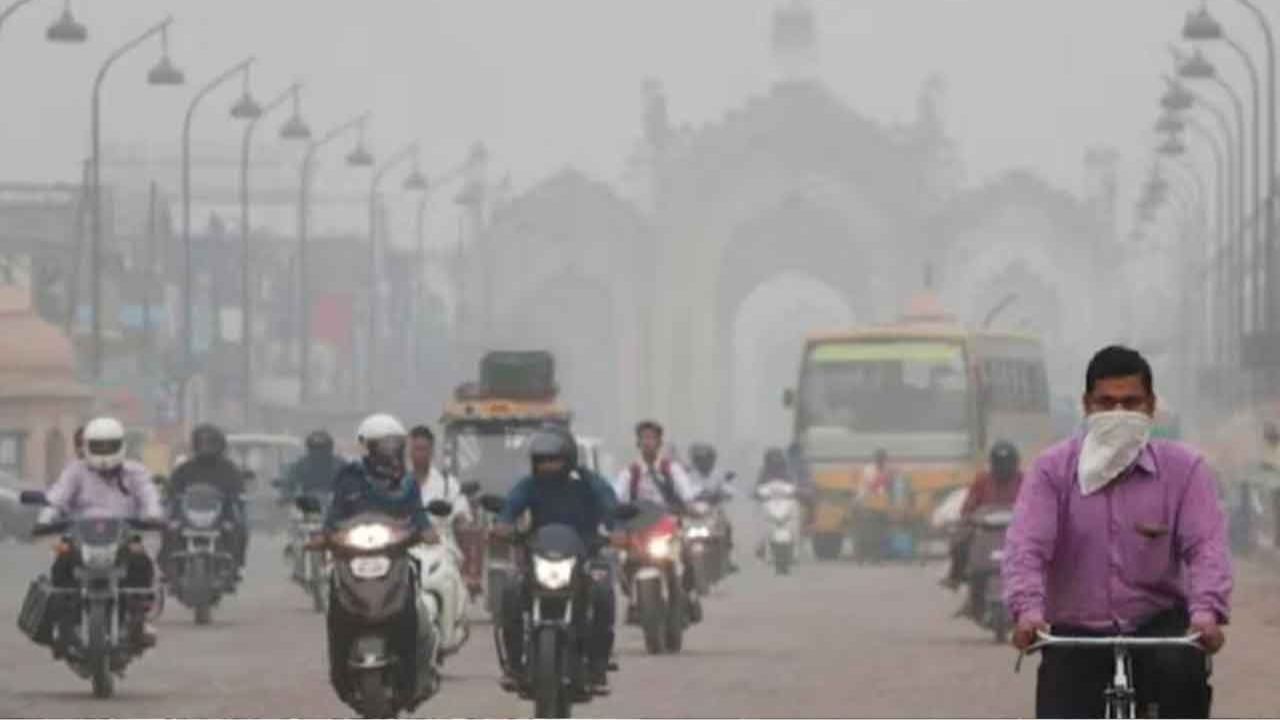 English
English

Delhi-NCR woke up to hazardous air on Saturday as the Air Quality Index (AQI) remained in the ‘severe’ category, crossing 400 in several areas. Thick smog and haze reduced visibility, while experts warned the pollution was equivalent to smoking 12 cigarettes daily.

Pollution wreaks havoc in Delhi-NCR, AQI crosses 400 in many areas
New Delhi: The Air Quality Index (AQI) remained in the 'severe' category in Delhi-NCR on Saturday. Residents woke up to dense fog and a suffocating atmosphere. The Air Quality Early Warning System (EWS) recorded the city's AQI at 386, while the private agency AQI.in reported it at 470.
Experts say this level has the same impact on the lungs as smoking 12 cigarettes per day. The dense morning haze also affected visibility from tall buildings and main roads in the city.
Delhi AQI: Hundreds gather, dozens held as India Gate sees protest against air pollution
According to the Central Pollution Control Board (CPCB), air quality in many areas was recorded in the 'very poor' and 'severe' categories. The AQI for major locations was as follows:
Ashok Vihar – 415
CRRI Mathura Road – 365
Burari Crossing – 383
Chandni Chowk – 419
Bawana – 441
Jahangirpuri – 422
Dwarka Sector-8 – 393
JLN Stadium – 389
ITO – 418
Mundka – 426
Najafgarh – 385
Patparganj – 399
Rohini – 423
Punjabi Bagh – 405
Narela – 418
Wazirpur – 447
RK Puram – 406
Siri Fort – 495
Vivek Vihar – 418
Sonia Vihar – 410
Given the prolonged high pollution levels, The Commission for Air Quality Management (CAQM) has maintained Stage III of the Graded Response Action Plan (GRAP) in Delhi-NCR. Under this stage, construction work, brick kilns, stone crushers, and other polluting activities have been banned.
Stubble burning in Punjab and Haryana is considered a major cause of pollution. The Supreme Court has asked the governments of these states to submit a report on the steps taken in this regard. A bench headed by Chief Justice (CJI) B.R. Gavai expressed concern over the worsening situation despite the implementation of GRAP.
Delhi Pollution Crisis: Schools up to class 5 shift to hybrid mode as GRAP-3 enforced
Experts have advised people to wear masks when going out, children and the elderly to stay indoors, and take other measures to avoid air pollution. The Health Department has also issued a warning, stating that persistently high pollution levels can cause respiratory diseases, allergies, and eye irritation.
Dense fog and smog reduced visibility in the city in the morning. This problem not only posed a challenge for motorists but also affected air travel and local transportation.